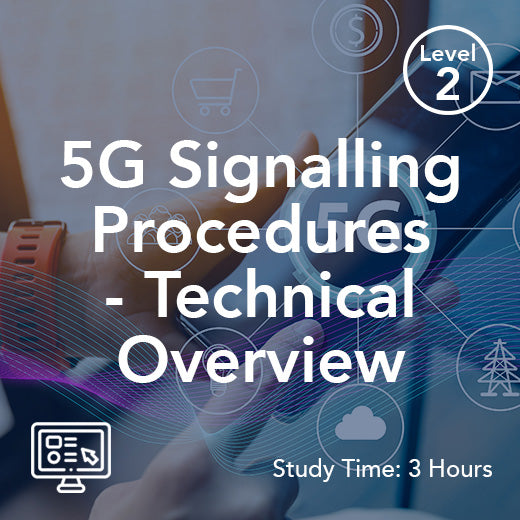Understanding the Base Station Subsystem: A Comprehensive Guide
- , by Stephanie Burrell
- 11 min reading time
In the world of mobile telecommunications, understanding the Base Station Subsystem (BSS) is paramount for grasping how our everyday communications function seamlessly. The BSS acts as the bridge between the mobile phone and the network, handling everything from signal transmission to call control to user authentication. Comprising several key components, including base transceiver stations and base station controllers, the BSS ensures that our calls, messages, and data transmissions are reliable and efficient. This guide will delve into the intricacies of the Base Station Subsystem, breaking down its components and explaining how they work together to keep us connected.
Introduction to Base Station Subsystem
Defining the Core Concepts
The Base Station Subsystem (BSS) is a crucial element of mobile networks, enabling communication between mobile devices and the broader network infrastructure. At its core, the BSS consists of two main components: the Base Transceiver Station (BTS) and the Base Station Controller (BSC). The BTS is responsible for facilitating wireless communication by transmitting and receiving radio signals to and from mobile devices. On the other hand, the BSC manages the network's resources, controlling multiple BTS units and handling tasks such as call setup and radio frequency and allocation. Together, these components ensure a seamless flow of information, maintaining the quality and efficiency of mobile communications. Additionally, the BSS is tasked with managing handovers between cells, ensuring that users experience continuous connectivity even when on the move. Understanding these core concepts is essential for appreciating how mobile networks operate and deliver services reliably.
Importance in Mobile Networks
The Base Station Subsystem is a fundamental component of mobile networks, playing a pivotal role in ensuring effective communication. It acts as the intermediary between mobile devices and the core network, facilitating the seamless transmission of voice, data, and multimedia services. The BSS's ability to manage signal quality and allocate resources efficiently is vital for maintaining call clarity and data speeds, which are crucial for user satisfaction. Furthermore, the BSS is responsible for managing user mobility by handling handovers between cells, allowing users to move freely without experiencing dropped calls or interrupted data sessions. This mobility management is essential for providing reliable service, especially in densely populated urban areas. By optimising network performance and ensuring continuous connectivity between mobile stations, the BSS is key to the functionality and reliability of mobile networks, making it an indispensable element in the telecommunication infrastructure.
Components of Base Station Subsystem
Base Transceiver Station (BTS)
The Base Transceiver Station (BTS) is a critical component of the Base Station Subsystem, serving as the primary point of radio communication between mobile devices and the network. Situated at cell sites, the BTS contains the equipment necessary for transmitting and receiving radio signals. It comprises antennas, transceivers, and other hardware that facilitate the wireless link with mobile phones. The BTS is responsible for converting digital signals from the network into radio waves that can be understood by mobile devices and vice versa. Additionally, it manages multiple channels, supporting several simultaneous calls or data sessions within its coverage area. The BTS also plays a role in maintaining signal quality by managing power levels and minimising interference. By performing these tasks, the BTS ensures that users experience clear calls and reliable data connections. Overall, the BTS is a foundational element in the architecture of mobile networks, facilitating efficient and effective wireless communication.
Base Station Controller (BSC)
The Base Station Controller (BSC) is a pivotal component within the Base Station Subsystem, managing multiple Base Transceiver Stations (BTS) and ensuring efficient use of network resources. Acting as a control hub, the BSC handles the allocation of radio channels, manages handovers between BTS units, maintains radio communication and oversees power levels and frequency assignments. By doing so, it ensures that mobile users maintain continuous connectivity, even as they move across different cell areas. The BSC also plays a significant role in call setup and termination, routing calls and data to the appropriate channels. Furthermore, it serves as a bridge to the wider mobile network, interfacing with the Mobile Switching Centre (MSC) to facilitate broader network communications. Through these functions, the BSC maintains the overall performance and reliability of the network, making it a vital element in the delivery of seamless mobile services. Its ability to manage resources effectively is crucial in optimising network capacity and reducing operational costs.
Transcoder and Rate Adaptation Unit (TRAU)
The Transcoder and Rate Adaptation Unit (TRAU) is an integral part of the Base Station Subsystem, tasked with optimising the transmission of voice and data across mobile networks. Its primary function is to transcode voice signals from the format used by mobile devices to the format used by the core network. This conversion is crucial for ensuring compatibility and efficient use of network resources. The TRAU also adapts data rates, matching the capabilities of the mobile device with the available network bandwidth. By performing these tasks, the TRAU significantly reduces the bandwidth required for each call, allowing the network to support more simultaneous users. Furthermore, the TRAU can be located either at the BSC or within the core network, depending on the network architecture. By enhancing transmission efficiency of voice and data calls and ensuring seamless integration between mobile devices and the core network, the TRAU is essential for maintaining high-quality communication and optimising network performance.
Functions of Base Station Subsystem
Signal Processing and Management
Signal processing and frequency management are vital functions of the Base Station Subsystem, ensuring that communications within the mobile network are clear and efficient. The BSS processes incoming and outgoing signals, converting them between the radio frequencies used by mobile devices and the digital signals utilised by the network. This conversion involves filtering, amplifying, and modulating signals to maintain quality and minimise interference. Additionally, the BSS manages signal strength by adjusting power levels, ensuring that users experience consistent service across the network coverage area. The subsystem also handles the allocation of frequencies and channels, optimising the use of available spectrum resources to support multiple users simultaneously. By effectively managing these aspects, the BSS contributes to reducing dropped calls and enhancing data transmission speeds. Overall, signal processing and management are essential for maintaining the integrity and reliability of mobile network communications, directly impacting user experience and network performance.
Traffic and Resource Allocation
Traffic and resource allocation are critical functions of the Base Station Subsystem, ensuring the efficient use of network resources and maintaining service quality. The BSS dynamically allocates radio channels and bandwidth to handle voice calls, data sessions, and other communication needs. This allocation is based on real-time traffic demands, prioritising resources to ensure that high-priority services receive the necessary bandwidth. The BSS also manages the distribution of users across different cell sites, balancing the load to prevent congestion and optimise network performance. By monitoring traffic patterns, the BSS can predict and respond to peak usage times, ensuring that sufficient resources are available to meet user demands. Additionally, the switching subsystem handles handovers between cells, seamlessly transferring active sessions to maintain connectivity as users move. Effective traffic and resource allocation are essential for maximising network efficiency, reducing operational costs, and delivering a consistent and reliable user experience.
Network Synchronisation
Network synchronisation is a crucial function of the Base Station Subsystem, ensuring that all components of the mobile network operate in unison. Synchronisation involves aligning the timing of signals across the network, which is essential for maintaining seamless communication and avoiding interference. Accurate timing is particularly important for processes like handovers, where calls or data sessions must be transferred smoothly between cells without interruption. The BSS achieves synchronisation through precise timing signals, often derived from global navigation satellite systems (GNSS) or dedicated network clocks. These signals ensure that all base transceiver stations and controllers per mobile station are synchronised to a common time standard. This coordination is vital for managing the network's frequency and time division resources, allowing multiple users to access the network simultaneously without conflict. Proper network synchronisation enhances the overall performance and reliability of the mobile network, ensuring a consistent and high-quality experience for users.
Challenges and Solutions
Handling Network Congestion
Handling network congestion is a significant challenge faced by the Base Station Subsystem, especially in densely populated areas where demand for mobile services is high. Congestion occurs when the network's capacity is exceeded by user demand, leading to degraded service quality, such as dropped calls and slower data speeds. To mitigate these issues, the BSS utilises several strategies. One common approach is dynamic resource allocation, where the network switching subsystem adjusts the distribution of radio channels and bandwidth based on real-time traffic conditions. Additionally, the implementation of load balancing helps distribute users more evenly across available cell sites, preventing any single site from becoming overly congested. The BSS can also prioritise certain types of traffic, ensuring that critical services maintain quality even during peak usage. By employing these solutions, the BSS can effectively manage congestion, optimising network performance and ensuring a satisfactory user experience despite high demand.
Ensuring Seamless Connectivity
Ensuring seamless connectivity is a critical challenge for the Base Station Subsystem, as users expect uninterrupted service while moving across different geographical areas. To achieve this, the BSS employs several techniques to manage handovers smoothly, ensuring that active calls and data sessions are transferred between cells without disruption. This involves accurately predicting a user's movement and preparing neighbouring cells to accept the handover. The BSS uses algorithms that consider factors such as signal strength and network load to determine the optimal time and target cell for handovers. Additionally, the implementation of overlapping coverage areas, known as macrodiversity, provides global system with an extra layer of reliability, allowing users to maintain connectivity even when transitioning between cells. Advanced technologies such as carrier aggregation and small cell deployment also contribute to improved coverage and capacity, reducing the likelihood of dropped connections. By focusing on these strategies, the BSS can provide users with a smooth and continuous mobile experience.
Future Trends in Base Station Subsystem
Advancements in 5G Technology
With the advent of 5G technology, the Base Station Subsystem is undergoing significant advancements to support the increased demands of modern mobile networks. 5G brings faster data speeds, lower latency, and the ability to connect a vast number of devices simultaneously, which requires substantial changes in the BSS. These advancements include the development of massive Multiple Input Multiple Output (MIMO) technology, which uses numerous antennas at the base station to boost capacity and improve signal quality. Additionally, 5G networks utilise network slicing, allowing different services to run on virtual networks tailored to specific needs, all managed by the BSS. The use of edge computing is also becoming prevalent, bringing data processing closer to the user to reduce latency and enhance performance. These innovations enable the BSS to handle the complexities of 5G, paving the way for more efficient and responsive networks, capable of supporting emerging technologies like the Internet of Things (IoT) and autonomous vehicles.
Integration with Internet of Things (IoT)
The integration of the Internet of Things (IoT) into mobile networks represents a transformative trend for the Base Station Subsystem. IoT involves connecting a multitude of devices, from household appliances to industrial sensors, all requiring reliable network access for data exchange. This integration demands a shift in how the BSS manages network resources and connectivity. To accommodate the sheer volume of devices, the BSS must support efficient machine-to-machine (M2M) communication protocols and ensure low-power, wide-area networking capabilities. This often involves deploying narrowband IoT (NB-IoT) technology, which allows devices to connect over extended distances while conserving energy. The BSS and network operators must also facilitate the real-time processing of data generated by IoT devices, often employing edge computing to handle data locally and reduce latency. By adapting to these requirements, the BSS plays a crucial role in enabling the seamless operation of IoT applications, supporting smart cities, automation, and enhanced connectivity worldwide.

































